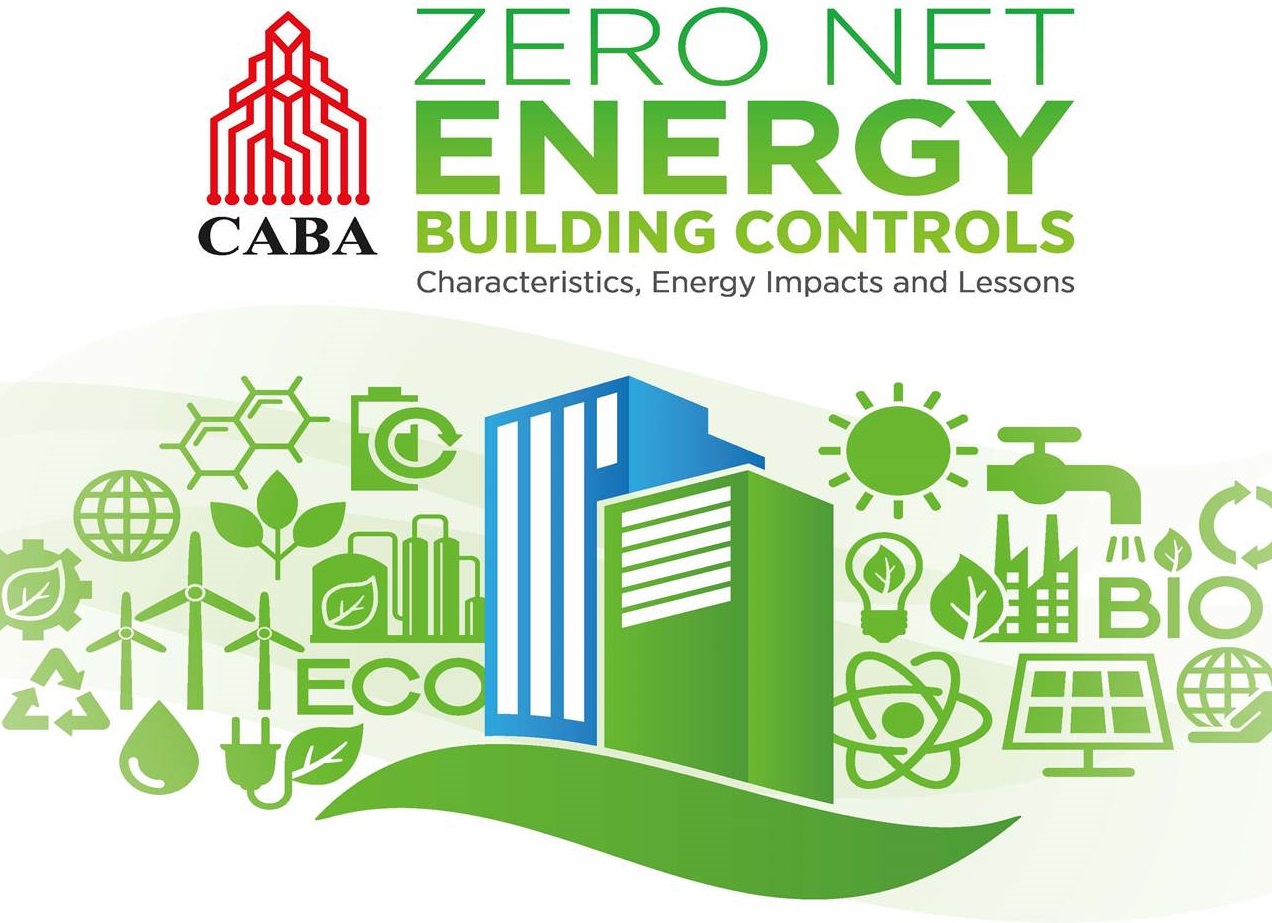by Brianna Crandall — November 25, 2015—Monitoring and control systems are at the nexus of buildings and successful zero net energy (ZNE) performance, according to a new study released last week from the Continental Automated Buildings Association (CABA).
The study, Zero Net Energy Building Controls: Characteristics, Energy Impacts and Lessons, was conducted by New Buildings Institute (NBI) and focuses on three areas from the designer and user experience to surface details about how existing and emerging monitoring and control technologies are helping designers, building owners, operators and occupants achieve and maintain ZNE performance.

The study details how existing and emerging monitoring / control technologies are helping designers, owners, operators and occupants achieve and maintain ZNE.
ZNE buildings have greatly reduced energy loads such that over the course of a year all of a building’s annual energy needs can be met with onsite renewable energy, according to CABA. ZNE buildings are an emerging trend in response to energy efficiency and carbon reduction policies, as well as market interest in “green and sustainable” environments.
CABA President & CEO Ron Zimmer pointed out:
Building and system-level controls can be a cornerstone that secures performance, or a weak link that creates challenges for design teams and operators. ZNE buildings are now moving to the forefront of energy-efficient design and operations, but little is known about the energy-related control systems in these projects. This study focuses on answering questions around control aspects in ZNE buildings.
In its examination of the design and system selection process, NBI heard from every project design firm interviewed that controls and early energy targets are critical to getting to zero net energy (ZNE).
But the study also found that most ZNE projects “have some controls problems.” The reasons were not based on any specific product, but rather on the process to “get it right” and installation issues. While some firms suggested simplifying processes and avoiding points of failure, the majority said system integration, extensive metering, automation, granular levels of data and feedback are “here to stay” and are “beneficial to the process.”
The study was conducted through interviews with design teams for 23 ZNE buildings, operators at six of those buildings, and 130 occupant surveys from seven of those buildings. The 23 buildings were all located in North America, representing six U.S. states and temperate Canadian provinces. Additionally, the buildings were located in the four ASHRAE climate (3, 4, 5 and 6) zones that contain the majority of the North American population. A majority of the buildings were office (13) and institutional-type (5) buildings.
The building sample size was intentionally diverse, ensuring that both large and small buildings were represented, according to the study. The projects were chosen because they reflect the very best energy-use targets, and in some cases metered data shows that they have surpassed those targets. These buildings collectively have targets and outcomes with average energy use intensity (EUI) of just 22 kBtu per square foot per year.
According to NBI CEO Ralph DiNola:
The findings of this study will help manufacturers target improvements, design teams to better integrate controls and work with contractors more effectively, and utilities to identify program priorities leading to a next generation of buildings that can be on the path to zero.
Other key findings include:
- From both the design team and the operators’ perspective, the solutions lie in an increased need for the controls contractor and the building operator to be more actively engaged with the design early, during commissioning and after occupancy.
- These buildings are designed to energy-use levels 50% less than most new buildings today and over 75% less than the average existing buildings, with renewables making up the small balance of energy needs.
- The majority of design firms attributed HVAC, lighting and plugs each with having a greater than 15% impact on the energy savings, so the success of the control of these systems means the success of the energy goals.
- The role of occupants on energy outcomes has never been greater. Fully 74% of the buildings rely on the occupant for some part of the controls success, from roles with operable windows and blinds to plug load controls and energy awareness campaigns.
The full Zero Net Energy Building Controls: Characteristics, Energy Impacts and Lessons Learned report is available for free download after a brief registration on the CABA Web site.




